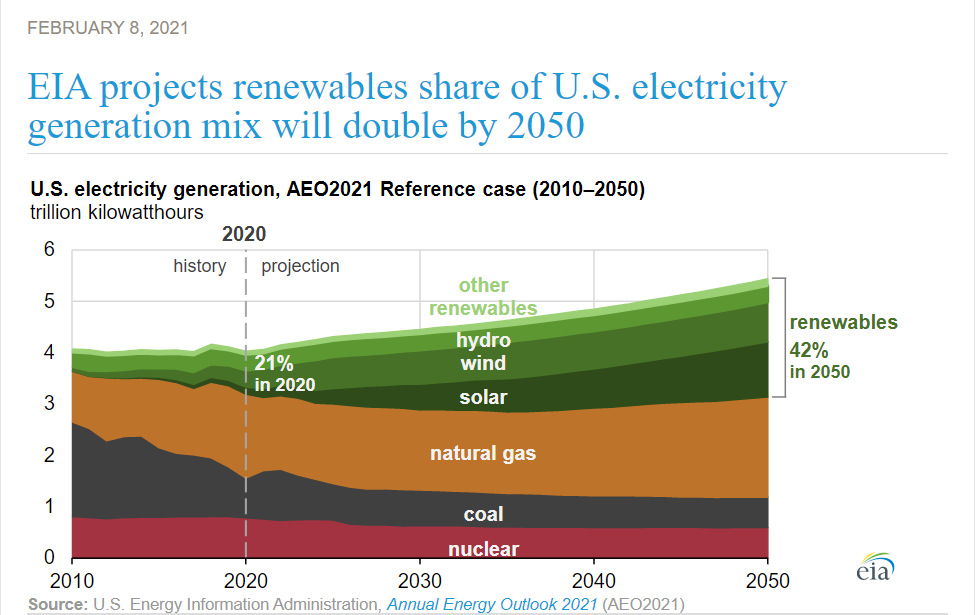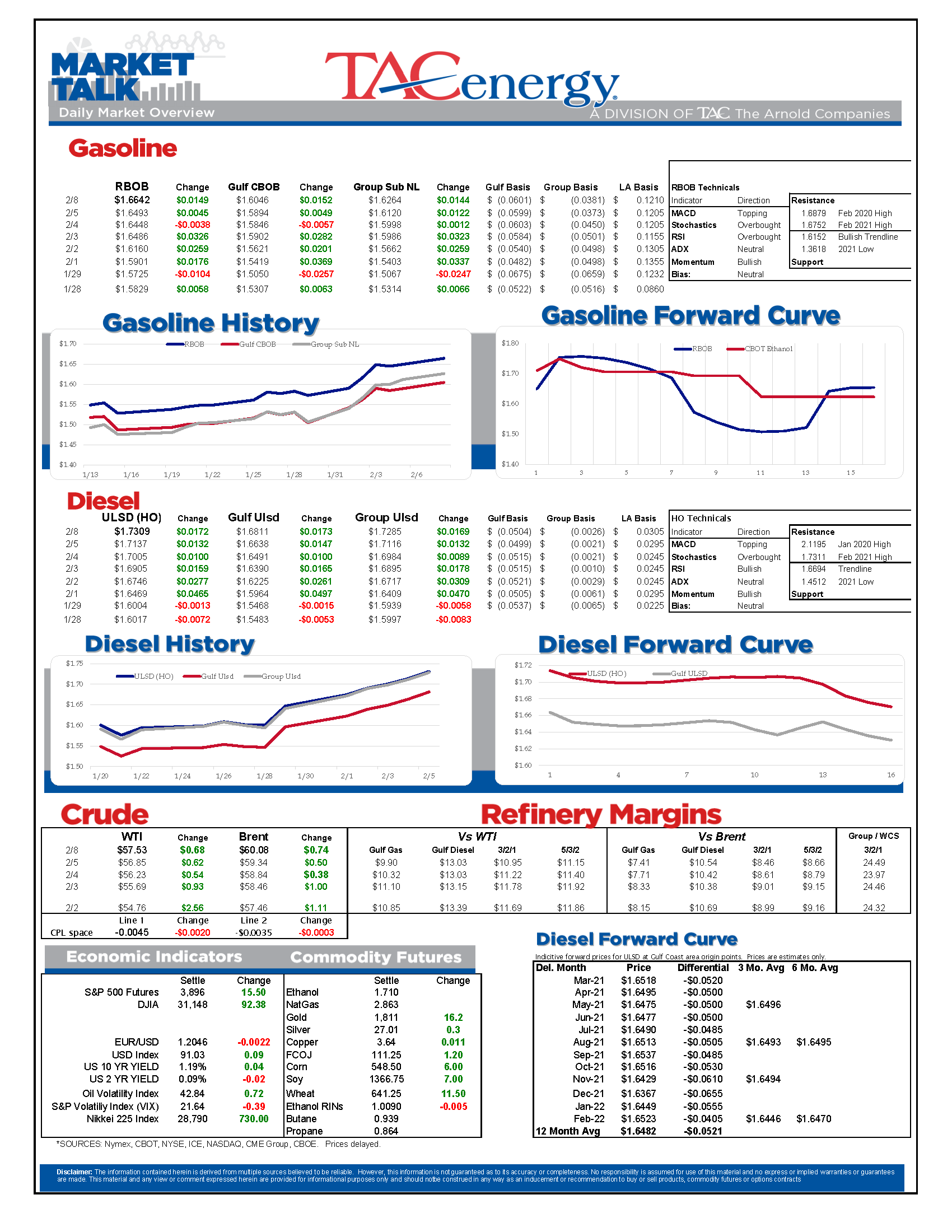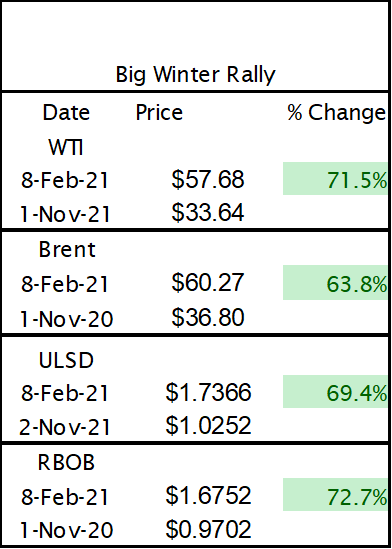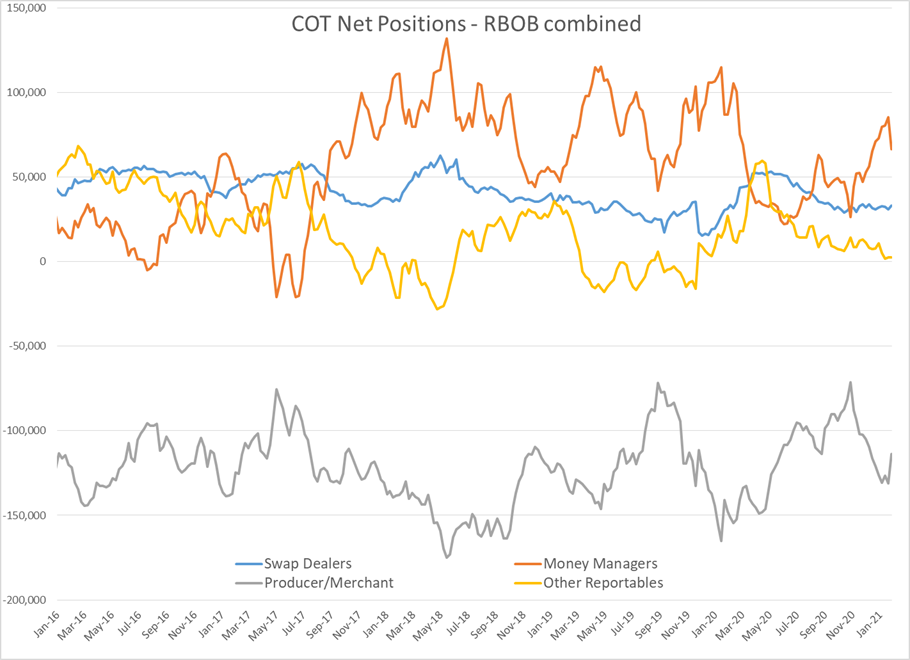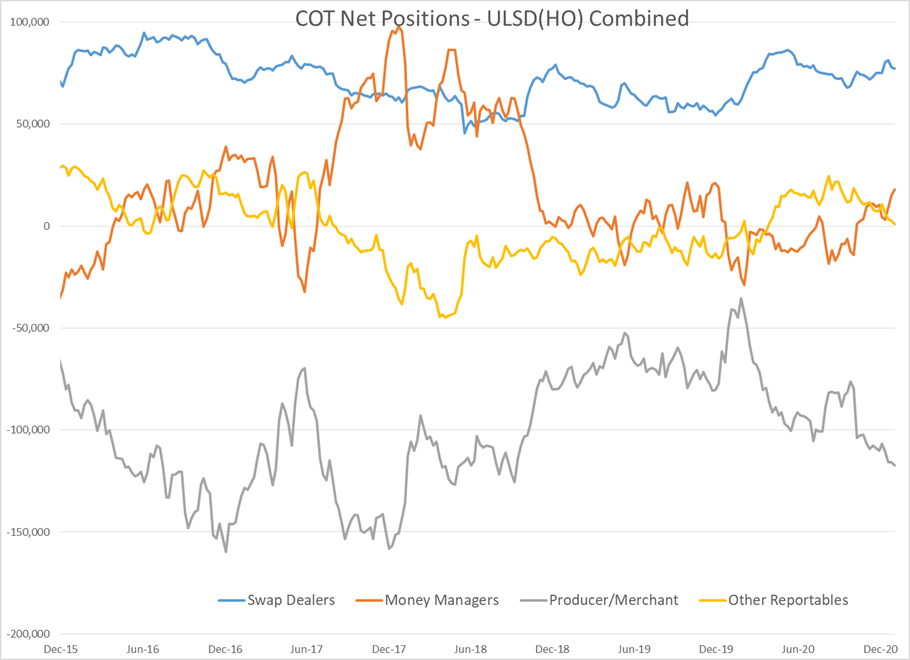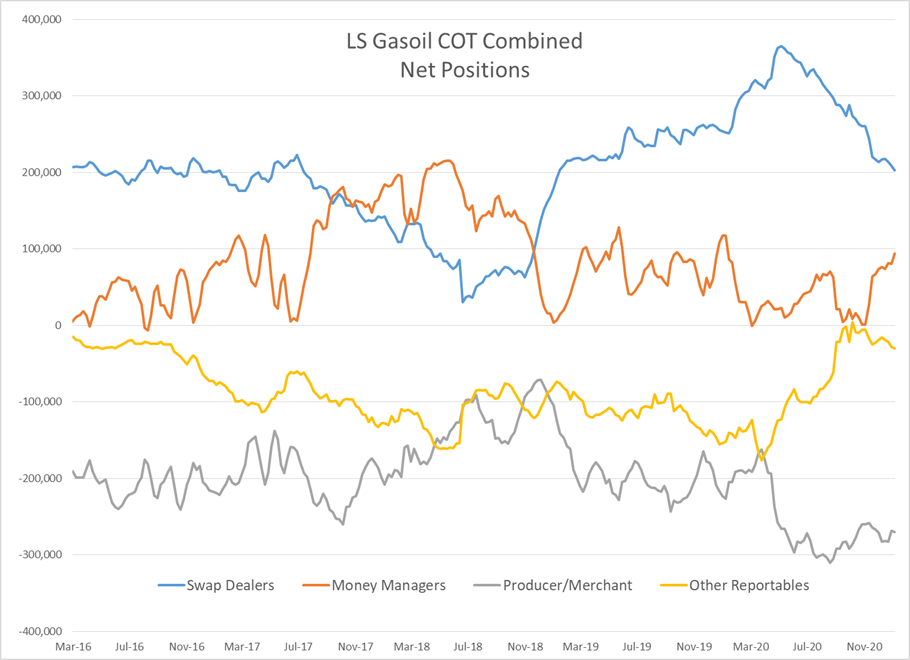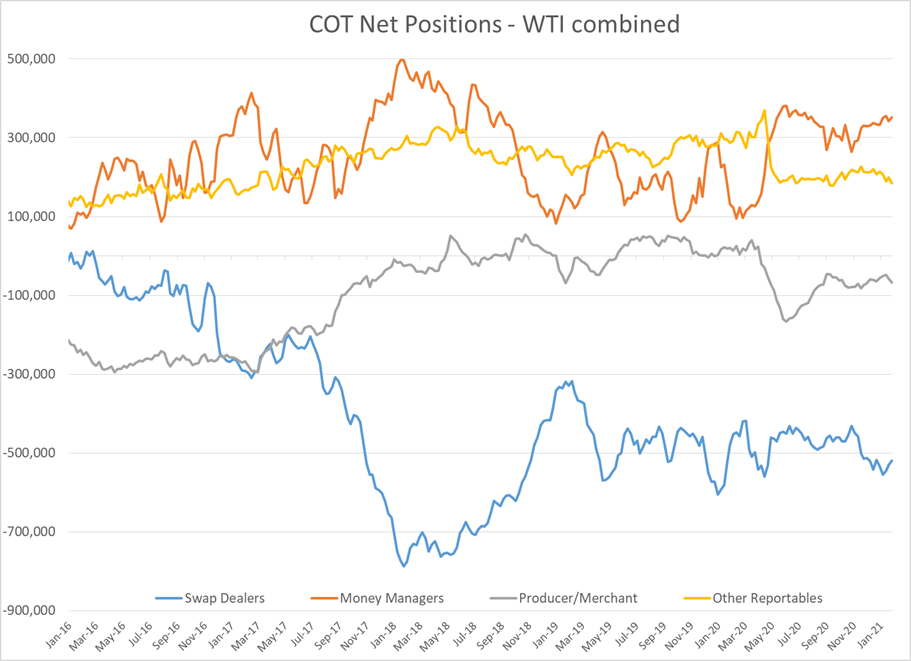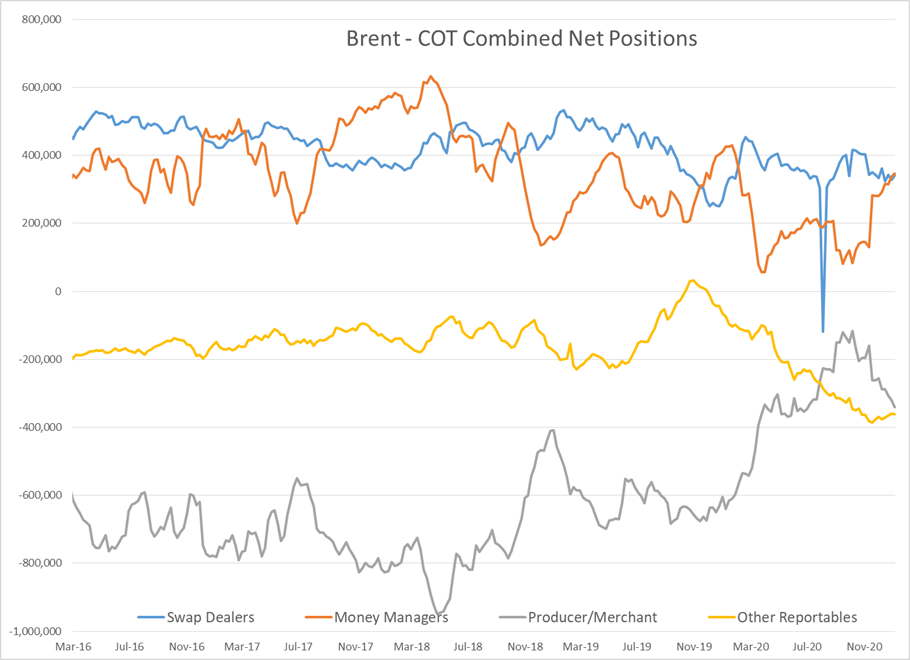Early Stages Of Major Commodity Rally

The rally marches on for energy prices, with Brent crude reaching the $60 mark overnight, and refined products hitting fresh, one-year highs. Most contracts are now trading 70% higher than the low trades from November first, with a well-defined bullish trend line serving as a buying point during any number of attempted sell-offs. A Bloomberg article argues that we’re in the early stages of a major commodity rally as the vaccines start to unleash pent up demand around the world.
While the path upward is still clear, there’s not much more room to go until refined products face a major test at last February’s highs. If they can break that resistance, there’s a case to be made for a run towards $2, but if they fail, we could see some harsh selling as the complex is looking severely overbought and there are signs that the big funds may be jumping off the gasoline bandwagon.
Large speculators remain bullish on oil and diesel prices, but seem to think the gasoline price rally has outkicked its coverage based on last week’s Commitments of Traders report. Net length held by money managers (the large speculative category in the report) grew in WTI, Brent, ULSD and Gasoil contracts, but was cut by 22% in RBOB contracts on the week. It appears that some of those sellers may have been head-faked by the selloff to end January as prices continued to move higher after the report’s data was collected last Tuesday. That said, in years past, when the big funds decide the seasonal rally is over, they typically liquidate gasoline positions heavily over a period of a few weeks, which could end up being a factor that finally brings the three month long rally to an end.
Baker Hughes reported a net increase of four oil rigs operating in the U.S. last week, with the Permian basin up by six rigs, while other locations declined by two. That’s the eleventh consecutive week of increases in the U.S. oil rig count, with the Permian adding 43 of the total 68 rigs during that stretch. It’s also worth noting that in the summer of 2019, oil prices traded lower than they are today, and there were 400 more drilling rigs active than there are today, so there’s still plenty of room for activity, although most producers remain cautious given the weak demand environment.
Click here to download a PDF of today's TACenergy Market Talk.
News & Views
View All
Energy Futures Are Caught Up In Headline Tug-O-War This Morning
Energy futures are caught up in headline tug-o-war this morning with Canadian oil production concerns and a positive US GDP report trying to push prices higher while sinking Chinese demand worries and Gaza ceasefire hopes are applying downward pressure. The latter two seem to be favored more so far this morning with WTI and Brent crude oil futures down ~45 cents per barrel, while gasoline and diesel prices are down about half a cent and two cents, respectively.
No news is good news? Chicago gasoline prices dropped nearly 30 cents yesterday, despite there not being any update on Exxon’s Joliet refinery after further damage was discovered Wednesday. Its tough to say if traders have realized the supply situation isn’t as bad as originally thought or if this historically volatile market is just being itself (aka ‘Chicago being Chicago’).
The rain isn’t letting up along the Texas Gulf Coast today and is forecasted to carry on through the weekend. While much of the greater Houston area is under flood watch, only two refineries are within the (more serious) flood warning area: Marathon’s Galveston Bay and Valero’s Texas City refineries. However, notification that more work is needed at Phillip’s 66 Borger refinery (up in the panhandle) is the only filing we’ve seen come through the TECQ, so far.
Premiums over the tariff on Colonial’s Line 1 (aka linespace value) returned to zero yesterday, and actually traded in the negatives, after its extended run of positive values atypical of this time of year. Line 1’s counterpart, Line 2, which carries distillates from Houston to Greensboro NC, has traded at a discount so far this year, due to the healthy, if not over-, supply of diesel along the eastern seaboard.
Click here to download a PDF of today's TACenergy Market Talk.

WTI And Brent Crude Oil Futures Are Trading ~$1.50 Per Barrel Lower In Pre-Market Trading
The across-the-board drawdown in national energy stockpiles, as reported by the Department of Energy yesterday, stoked bullish sentiment Wednesday and prompt month gasoline, diesel, and crude oil futures published gains on the day. Those gains are being given back this morning.
The surprise rate cut by the People’s Bank of China is being blamed for the selling we are seeing in energy markets this morning. While the interest rate drop in both short- and medium-term loans won’t likely affect energy prices outright, the concern lies in the overall economic health of the world’s second largest economy and crude oil consumer. Prompt month WTI and Brent crude oil futures are trading ~$1.50 per barrel lower in pre-market trading, gasoline and diesel are following suit, shaving off .0400-.0450 per gallon.
Chicagoland RBOB has maintained its 60-cent premium over New York prices through this morning and shows no sign of coming down any time soon. Quite the opposite in fact: the storm damage, which knocked Exxon Mobil’s Joliet refinery offline on 7/15, seems to be more extensive than initially thought, potentially extending the repair time and pushing back the expected return date.
There are three main refineries that feed the Chicago market, the impact from one of them shutting down abruptly can be seen in the charts derived from aforementioned data published by the DOE. Refinery throughput in PADD 2 dropped 183,000 barrels per day, driving gasoline stockpiles in the area down to a new 5-year seasonal low.
While it seems all is quiet on the Atlantic front (for now), America’s Refineryland is forecasted to receive non-stop rain and thunderstorms for the next four days. While it may not be as dramatic as a hurricane, flooding and power outages can shut down refineries, and cities for that matter, all the same, as we learned from Beryl.

